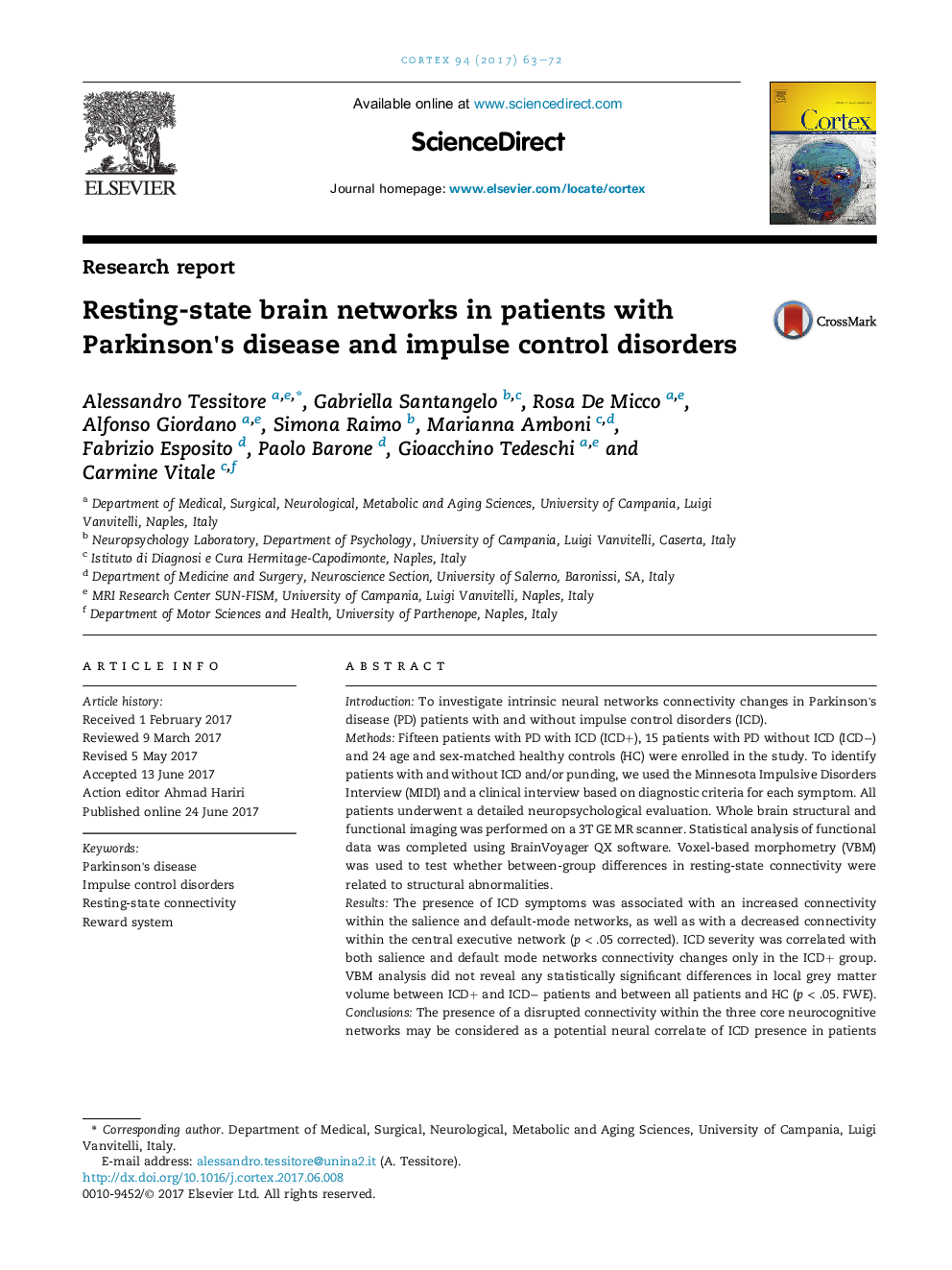| Article ID | Journal | Published Year | Pages | File Type |
|---|---|---|---|---|
| 5044568 | Cortex | 2017 | 10 Pages |
IntroductionTo investigate intrinsic neural networks connectivity changes in Parkinson's disease (PD) patients with and without impulse control disorders (ICD).MethodsFifteen patients with PD with ICD (ICD+), 15 patients with PD without ICD (ICDâ) and 24 age and sex-matched healthy controls (HC) were enrolled in the study. To identify patients with and without ICD and/or punding, we used the Minnesota Impulsive Disorders Interview (MIDI) and a clinical interview based on diagnostic criteria for each symptom. All patients underwent a detailed neuropsychological evaluation. Whole brain structural and functional imaging was performed on a 3T GE MR scanner. Statistical analysis of functional data was completed using BrainVoyager QX software. Voxel-based morphometry (VBM) was used to test whether between-group differences in resting-state connectivity were related to structural abnormalities.ResultsThe presence of ICD symptoms was associated with an increased connectivity within the salience and default-mode networks, as well as with a decreased connectivity within the central executive network (p < .05 corrected). ICD severity was correlated with both salience and default mode networks connectivity changes only in the ICD+ group. VBM analysis did not reveal any statistically significant differences in local grey matter volume between ICD+ and ICDâ patients and between all patients and HC (p < .05. FWE).ConclusionsThe presence of a disrupted connectivity within the three core neurocognitive networks may be considered as a potential neural correlate of ICD presence in patients with PD. Our findings provide additional insights into the mechanisms underlying ICD in PD, confirming the crucial role of an abnormal prefrontal-limbic-striatal homeostasis in their development.
